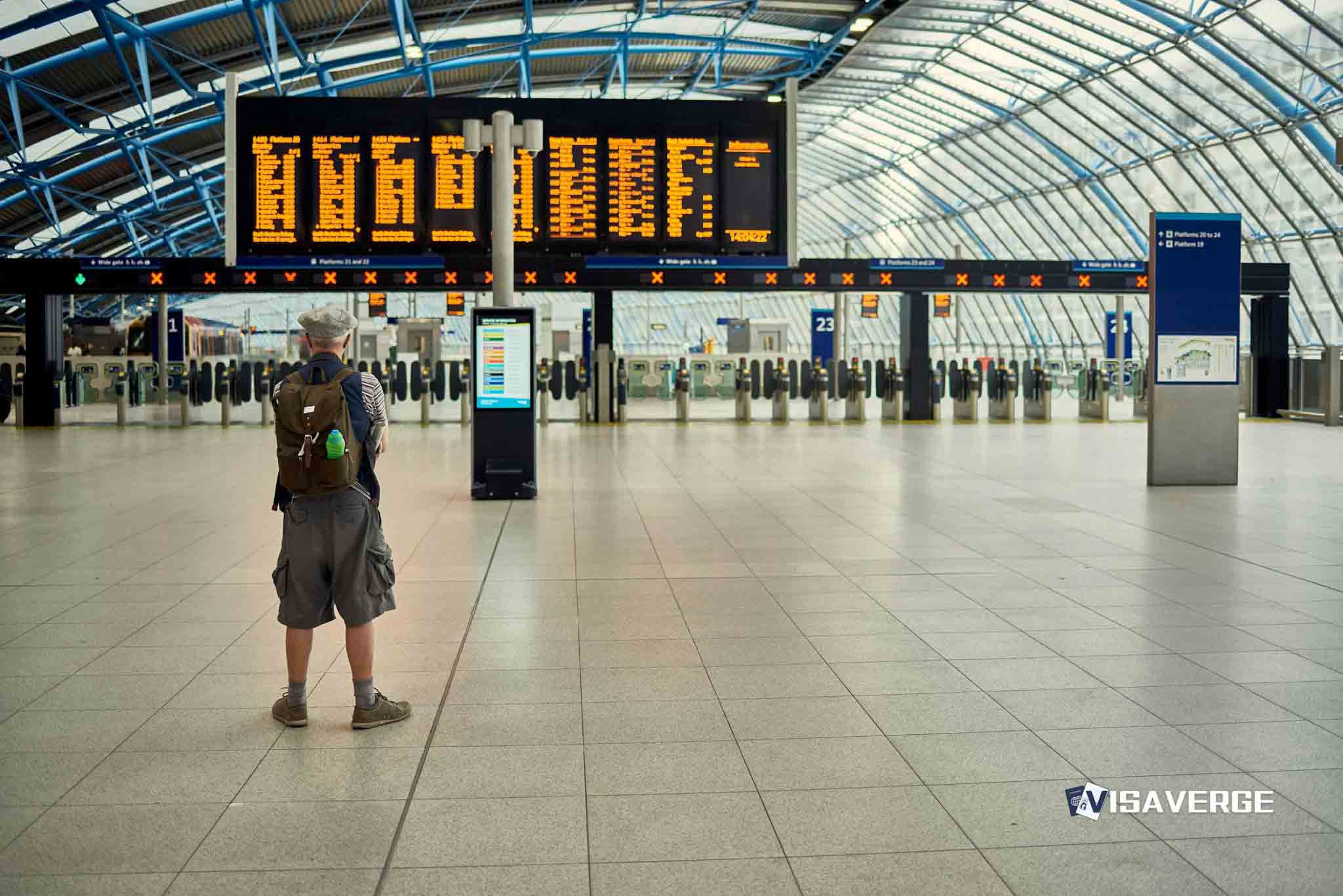(UNITED STATES) The Federal Aviation Administration moved to slow air traffic and tighten operating rules this month as controller fatigue mounted during the ongoing government shutdown, with the agency warning that staffing shortages have pushed parts of the system to its limits.
Beginning November 7, 2025, the FAA started a phased reduction of air traffic capacity at major hubs, trimming schedules by 4% and increasing cuts to 10% by November 14, 2025 across 40 high-volume airports. Officials said the FAA safety measures are designed to reduce workload on stretched air traffic control teams and prevent errors that could arise when controllers are exhausted and working unpaid overtime.

Traffic caps and operational pacing
The unusual move to cap traffic was paired with a decision to slow or limit certain flight operations at affected facilities. Managers are:
- Adjusting flow rates
- Spacing aircraft more widely
- Holding traffic during peak hours
These steps are intended to avoid overloading short-staffed control rooms. The FAA framed the short-term pain for airports and airlines as necessary to keep operations safe while managing controller fatigue amid staffing shortages and mandatory six-day workweeks.
Specific operational limits and paused activities
To reduce complexity and monitoring demands, the FAA has taken several targeted actions:
- Restricted some visual flight rule (VFR) approaches that require extra monitoring
- Placed limits on commercial space launches
- Paused parachute operations and aerial photo missions near facilities experiencing agency-defined “staffing triggers”
These measures are designed to preserve core traffic flows and reduce additional tasks that add risk under high-fatigue conditions.
Effects on airports, airlines, and passengers
Airports in busy corridors have already felt the impact:
- Airlines reduced frequencies on some routes and shifted departure banks to quieter windows.
- Carriers have used larger aircraft to move similar passenger volumes with fewer operations.
- Capacity caps have added minutes to taxi times and gate holds in some markets.
Officials describe the system as stable but emphasized these protections are temporary. Routine air travel remains safe, though travelers should expect more delays and tighter margins in the near term.
Scheduling reforms and rest protections
The FAA is advancing scheduling reforms, developed with the National Air Traffic Controllers Association (NATCA), that labor leaders have long sought:
- Revising duty rosters to give controllers longer rest periods between shifts, especially on overnight sequences with higher fatigue risk
- Reducing quick-turn combinations and limiting early-to-late flip shifts that disrupt sleep
NATCA has argued erratic rosters contribute to chronic fatigue; FAA leaders say addressing this is a critical safety step during the shutdown and beyond.
Another change involves in-shift rest:
- Controllers working nights may take recuperative breaks of up to 2.5 hours
- Supervisors are instructed to make space for these breaks where staffing allows
- Facilities are urged to plan teams so one controller can step away while another monitors positions
Fatigue experts support short, controlled rest as a way to restore alertness for high-concentration work in radar rooms and towers.
“The aim is for a controller who feels unfit to work a safety-critical position to step aside and take a brief rest or be reassigned, rather than push through exhaustion.”
Fatigue risk management and culture
Safety teams inside the FAA are reinforcing a fatigue risk management system that includes:
- Improved shift design
- Ergonomic workstations
- Measures encouraging controllers to self-declare fatigue without fear of punishment
- Greater reliance on voluntary safety reporting from pilots and controllers to detect patterns, such as clusters of mistakes at specific times or facilities
The goal is to create an environment where safety reports lead to actionable changes rather than punitive responses.
Staffing and hiring plans
The shutdown has exacerbated long-standing staffing shortages that predate the current crisis. Contributing factors include slowed training pipelines from past budget fights and pandemic pauses, leading many facilities to rely on mandatory overtime.
The FAA plans to ramp up hiring, targeting at least 8,900 new controllers by 2028. Officials cautioned:
- Recruitment, training, and certification take time
- New hires often need years to reach full certification at complex facilities
Thus, hiring will strengthen the system long term but not immediately solve near-term gaps.
Practical impacts travelers should expect
The combined effect of FAA measures is a lowered operational tempo that current staffing can support, which means short-term inconvenience for some passengers and airlines:
- Longer waits on the tarmac during adverse weather
- More conservative spacing between arrivals and departures
- Occasional holds before takeoff as controllers balance loads
- Cargo schedule changes overnight to preserve staffing headroom for early-morning passenger banks
Passengers may also notice fewer same-day schedule tweaks and small reroutes that add minutes in the air.
Instrument procedures and approach changes
With selected visual approaches banned at affected airports, crews have adjusted:
- Flights are being steered onto established instrument procedures that keep spacing predictable
- This reduces the need for controllers to manage mixed approach types
- Arrival paths can lengthen slightly, but airline operations managers consider the trade-off acceptable if it reduces cockpit and controller workload
Monitoring and timelines for lifting caps
Airline trade groups have asked for clearer timelines on when the FAA will lift the 10% caps and resume normal throughput. The FAA’s approach:
- Review data from voluntary reports, on-time performance, and controller schedules every few days
- Adjust caps facility by facility based on safety outcomes, not schedule pressure
Controllers report a mix of pride in keeping the system running and strain from prolonged overtime. The FAA says safety will guide any rollback of restrictions.
Broader ecosystem adjustments
Other stakeholders are adapting:
- Airport managers and airlines smoothing peak banks and nudging demand into shoulder periods
- Ground handlers and ramp crews adjusting to new pacing
- International carriers requesting early notice of deeper cuts to plan crew duty times
Analysis by VisaVerge.com indicates travelers and employers are watching these operational changes for their ripple effects on connections and time-sensitive trips during federal disruptions.
Key message and possible futures
The central theme from officials: safety takes precedence over speed. The FAA prefers holding flights on the ground or metering traffic rather than asking controllers to work at a pace that risks mistakes.
Possible outcomes in coming weeks:
- If staffing improves or the shutdown ends:
- Gradual restoration of capacity at the 40 high-volume airports
- Reopening of restricted activities like some VFR approaches and special missions
- If pressure persists:
- Caps may remain in place longer while hiring continues and schedules are refined with NATCA
For official information about national airspace operations and air traffic services, the FAA directs users to its Air Traffic portal at FAA Air Traffic.
Bottom line
Officials say the measures are achieving their intended effect—reducing workload spikes, increasing time between shifts, and building protected rest into overnight work. Taken together, these steps help preserve the integrity of the National Airspace System during exceptional strain. While the speed of recovery depends on budget decisions and training timelines, FAA leaders maintain that a measured tempo now is the surest way to keep the system safe until staffing catches up.
This Article in a Nutshell
Facing controller fatigue during a government shutdown, the FAA reduced air traffic capacity at 40 major airports starting Nov. 7, 2025, moving from 4% to 10% cuts by Nov. 14. It slowed operations, restricted certain VFR approaches, paused parachute and aerial photography, and limited commercial space launches to lower workload. The FAA and NATCA agreed on roster reforms, longer rest periods, and in-shift breaks of up to 2.5 hours. Hiring aims for 8,900 new controllers by 2028; officials call the measures temporary safety protections while staffing and training scale up.













